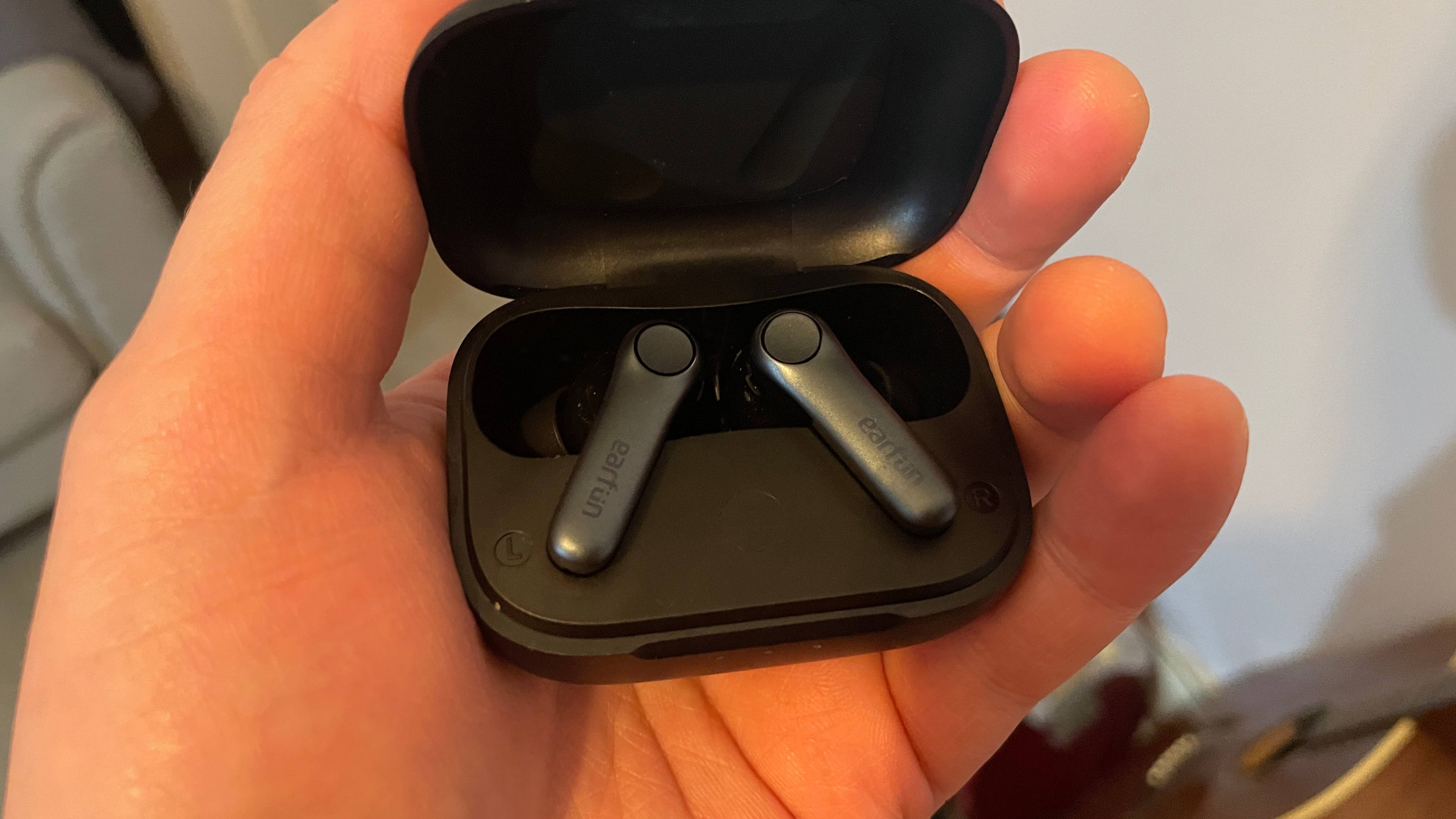Our Verdict
Just add a quality dual-slot GPU and you've a quirky but brilliant budget system which aces games at 1440p and ultra settings.
For
- Tremendous value
- Unique design!
- Add a GPU and it rocks
Against
- Older CPU
- Unique design!
- Limited upgrade path
PC Gamer's got your back
Being something of a mini-PC connoisseur certainly has its moments, and Beelink's GTi 12 mini-PC and EX Docking Station combo has served me up a corker. I mean look at it! Just who is this crazy, half-naked PC aimed at? I'm fairly certain I've arrived at the answer, but let's have a poke around the thing before we go planting flags.
I keep glancing at it from different angles, trying to get a handle on its form. It presents a mass of shapes; a sort of grey, brutalist edifice of steps, blocks and ledges. If you plonked it down in the centre of East Berlin circa1955 and hung a ‘STASI HEADQUARTERS' sign on the front, passers-by wouldn't bat an eyelid.
The east-wing of this little military-industrial complex is the Beelink GTi 12 itself, a mini-PC driven by Intel's i9-12900H. It's an Alder Lake APU; a few generations old now, but still solid, delivering 5 GHz turbo speeds at a max draw of 65 W across six performance cores and eight efficiency cores. Set against Intel's 13th and 14th-gen ride-or-die watt-gobblers, it's a sensible and dependable choice of chip for a mini-PC.
It comes with the Iris Xe iGPU (Eww, gross I know, but don't worry you won't be using it), 32 GB of 4800 MHz DDR5 (the 12900H's RAM-speed ceiling), and a demonstrably swift 1 TB M.2 SSD.
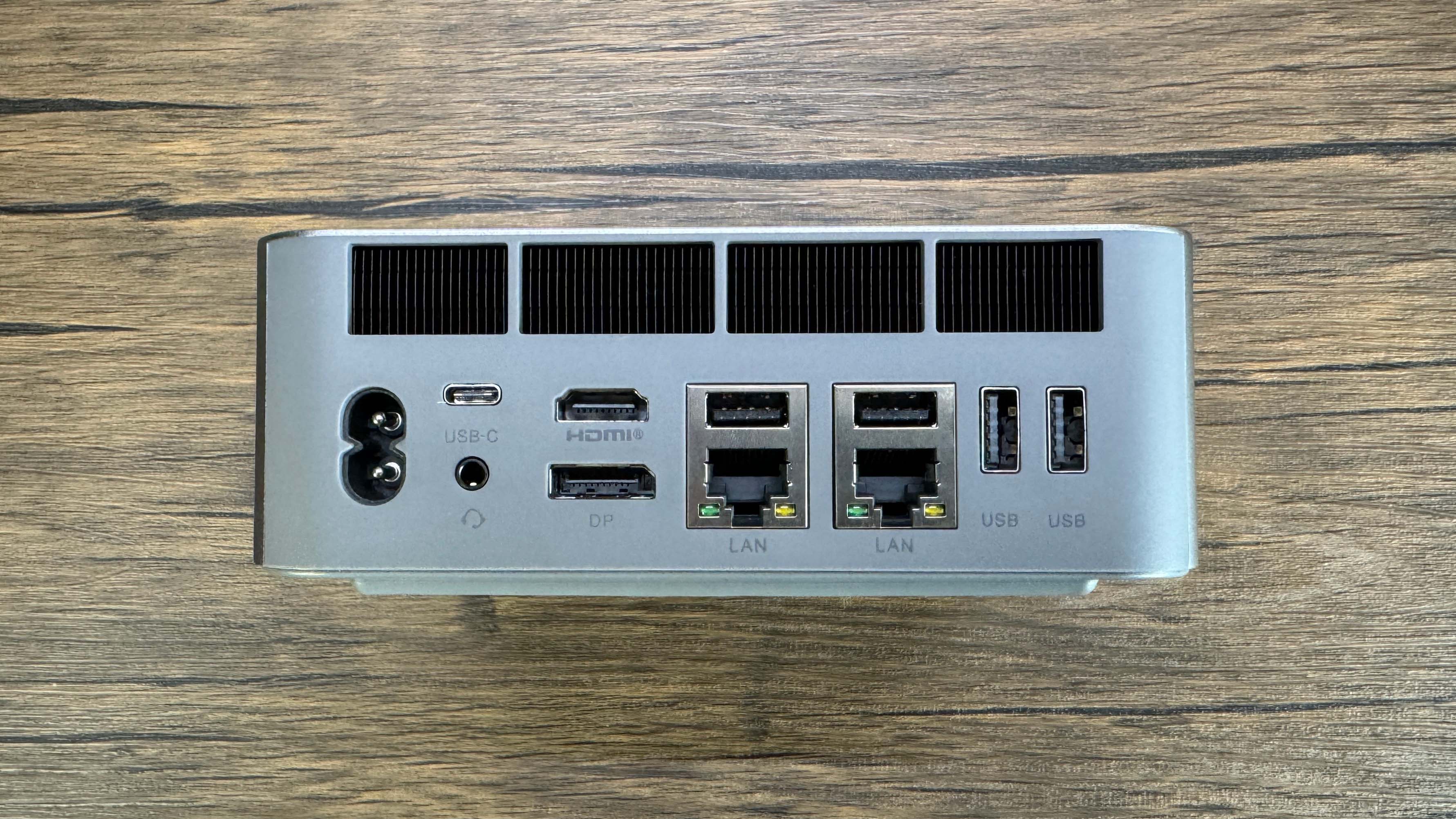
APU: Intel Core i9 12900H
iGPU: Iris Xe
Graphics expansion: Full-length X8 PCIe 4.0
Memory: 32 GB DDR5-4800 SODIMM
Storage: 1 TB M.2 SSD
Wireless: WiFi 6E, Bluetooth 5.3
I/O: 5x USB 3.2, 1x USBC, 1x Thunderbolt 4, 2x 2.5G LAN, 2x 3.5 mm audio jack, 1x SD Card slot, 1x DP 1.4, 1x HDMI 2.0
Price: $738 | £551
Its chassis is on the larger side as these things go, but the internal space has been utilised well, particularly in the cooling department. Pushing all cores to the max with Prime95 it remains whisper-quiet, quaffing a reasonable 65 W and sitting snug at 76 °C. Pop the lid and you'll also find a pair of tiny speakers; hardly hi-fi, but they're able and clear enough for system sounds, video calls, and the odd YouTube delidding tutorial. There's also an internal PSU, which adds girth but negates the need for the usual external power-brick.
What really sets the GTi 12 apart from other mini-PCs is hidden beneath a little silicone flap on its underbelly: a full-length, eight-lane PCI Express 4.0 slot. Physically identical to the one you see in any desktop PC, but with eight PCIe lanes rather than 16.
This slot enables the GTi 12 to park neatly onto the EX's Docking Station's side-mounted x8 PCIe terminal, forging a direct connection to the dock's full-length GPU slot. That interface will take any single or dual-slot graphics card, granting it double the PCIe 4.0 bandwidth of a Thunderbolt or OCuLink dock. The GPU is powered by a silent, super-compact 600 W PSU inside the dock, using the twin 8-pin power cables included in the kit. The GTi 12 still relies on its own internal PSU while docked, so both units need plugging into the wall.
Opening the dock reveals an M.2 SSD mount for storage expansion, which can be swapped out for the optional M.2 wireless-card mount in the kit's accessories. The outer edge of the dock sports two screw-in WiFi antenna ports for better signal reception, so if you feel the GTi 12's internal aerial isn't cutting the mustard in your WiFi situation, you can remove its wireless card, stick it in the dock, and screw in a couple of antennae for a reception buff. These aren't included but they're two-a-penny online.
600 watts of dedicated GPU power then. That's ample juice for a fatty boombatty, though the dock physically limits you to a two-slot card. Obviously I felt compelled to tinker, and Beelink's website plainly states that a 4090 is compatible, so I unbolted the three-slot backplate from our Founder's Edition RTX 4090 and plugged it in. NVIDIA urges customers to use a three-into-one 12vHPWR converter for this GPU, but with only two PCIe power-sockets available from the PSU, I tried a two-into-one 12vHPWR converter. Alas, no dice: it wouldn't power the on, though I understand others have had better luck using OEM RTX 4090s in the EX dock. It's all academic anyhow; with no backplate to secure the GPU to the dock's vertical standoff, the only thing holding FIVE FRICKING KILOGRAMS of RTX 4090 in place is the PCB of its PCIe interface. Cue clenching panic and hasty removal.
I swapped in a dual-slot RTX 4070 Ti and up it perked, all guns blazing. Benchmarking the GTi 12 with this GPU against a Ryzen 9 7900 desktop system with the same card, it's immediately apparent that the eight-lane PCIe 4.0 interface grants ample data-bandwidth for the RTX 4070 Ti to work at full tilt. It achieves near-parity performance with our PCIe 16-lane desktop machine, lagging by only a few frames per second, and that's likely down to the performance differential between the i9-12900H and the faster, newer, higher-TDP, more core-laden Ryzen 9.
Whether the EX Dock's x8 slot has enough bandwidth to allow, say, a dual-slot RTX 4080 Super to work to its full potential cannot be confirmed without testing—I didn't have one on hand—but I suspect it'd be fine. I've seen a 4090 benchmarked in a PCIe 3.0 x16 slot—the same overall bandwidth as a PCIe 4.0 X8 slot—and the drop in performance versus an x16 PCIe 4.0 slot was only around 3%. So I suspect a 4080 would thrive over eight PCIe 4.0 lanes. What I can state with assurance is that the 4070 Ti transforms the humble GTi 12 into a 1440p gaming powerhouse.
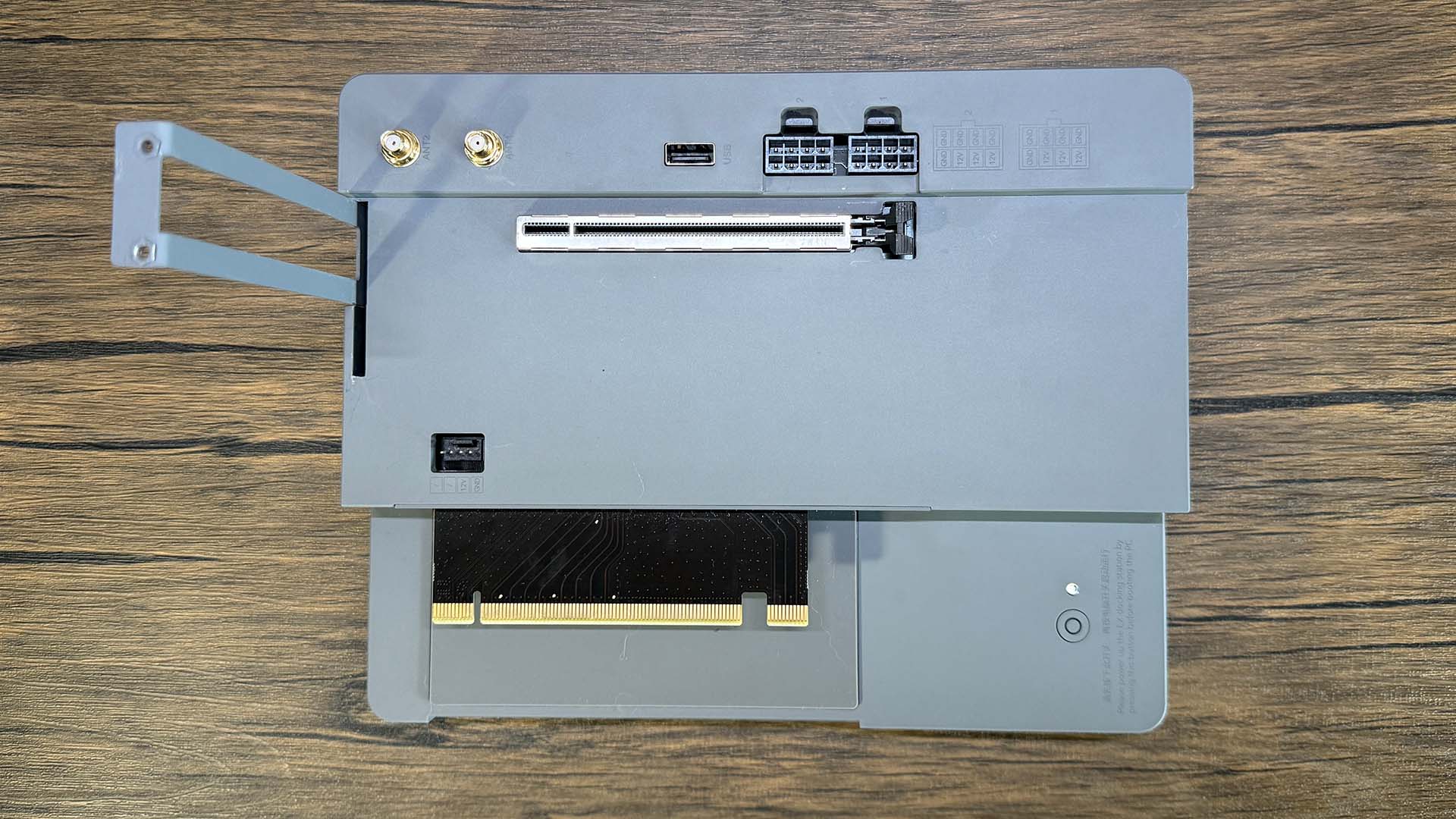




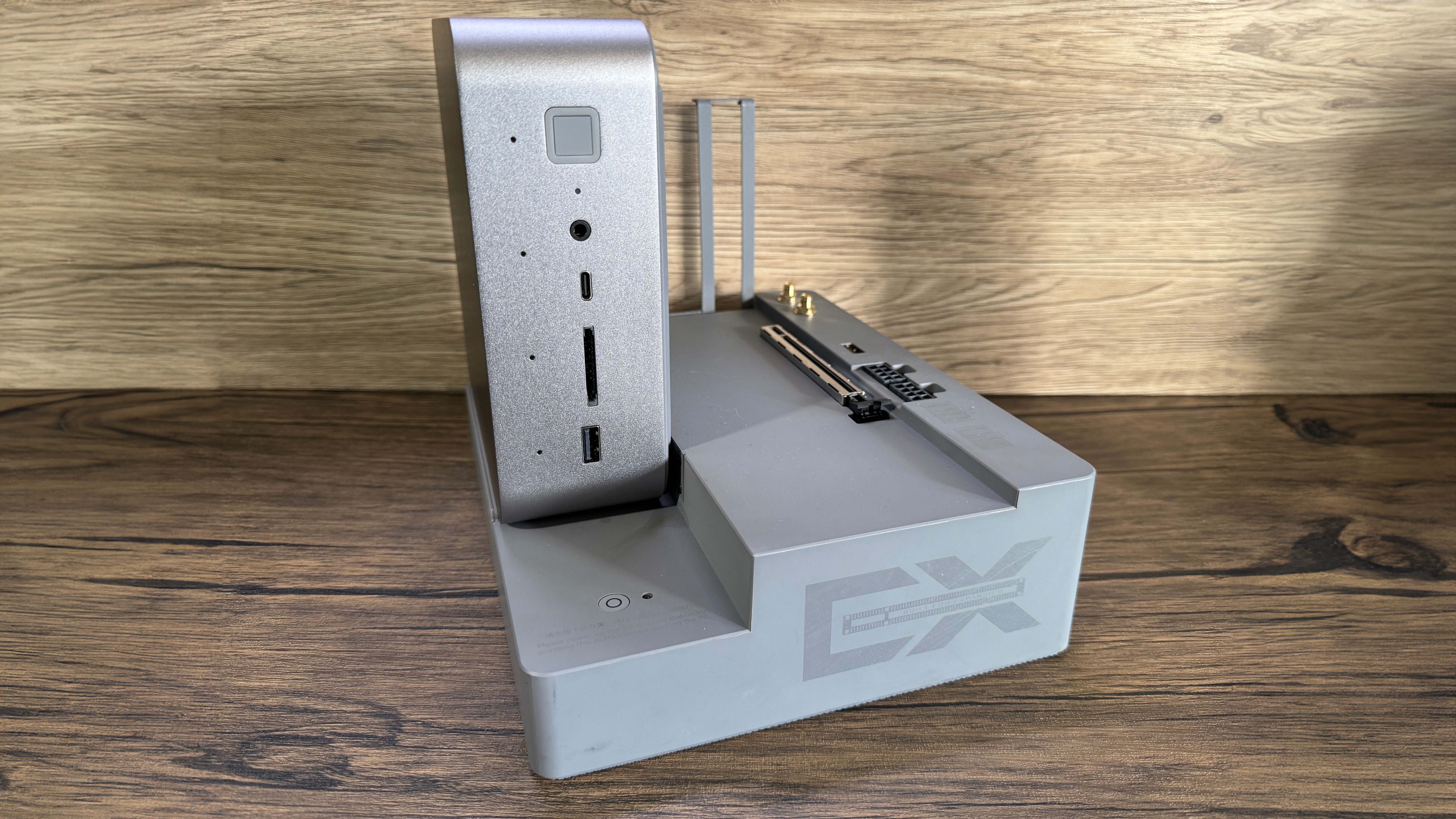
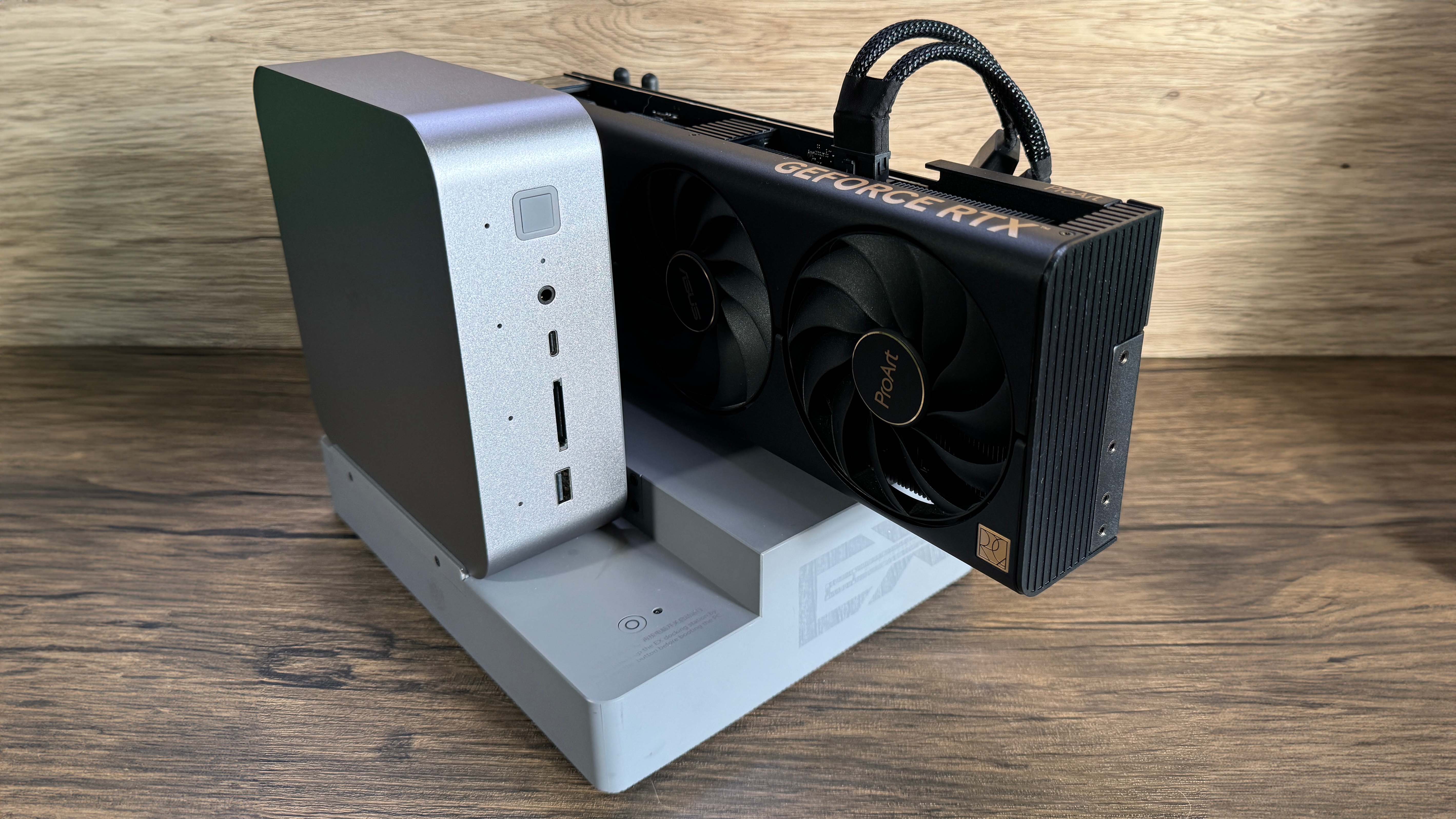
For this price, you'd be very hard-pressed to find an off-the-peg machine with anything better than a middling Core i5 and an RTX 4060 Ti, and certainly nothing this compact and quiet. As for where it sits in the mini-PC performance pantheon, arming the GTi 12 with a 4070 Ti delivers massively better 1440p gaming performance than the Asus ROG NUC—one of the most expensive and performant mini-PCs we've tested—for a significantly smaller tax on your personal treasury.
And suddenly, the answer to my original question—who is this hardware package really aimed at?—becomes crystal clear: anyone who wants a fast 1440p gaming PC on a budget. It's really that simple. We can talk about the portability of mini-PCs for work or study purposes, but that seems like a slim use-case to me when laptops offer way more convenience. It's an option certainly, but really this thing excels at being a gaming desktop.
✅ You want great 1440p performance: Pair this setup's Core i9 with a quality GPU and watch it fly.
✅ You love a bargain: Surprisingly cheap for the performance on offer.
❌ You're a future-proofer: The only route to a new CPU and RAM is to replace the mini-PC element.
❌ You demand a cutting-edge CPU: The i9-12900H won't deliver like a high-end 2024 chip.
So what are the downsides? The aesthetics, conceivably; while I rather delight in its batshit Bauhaus blockiness—form following function and all that—but your mileage may well vary. As far as eGPU-style setups go, it's by far the tidiest one out there, but there's still some cabling on show. I'd hit up a custom cable maker to cut me a short, dual-PCIe-to-12vHPWR cable in grey, and opt for a colour-coordinating Founders Edition card; that'd look bang-tidy. Plus, while the GTi 12 and the dock's PSU are blissfully quiet, an uncaged GPU may not sound so affable. That's an easy fix with MSI afterburner, to be fair—undervolting and custom fan-curves for the win—but worth bearing in mind.
Beyond extra storage, upgradability of the mini-PC is off the table. The bundle can be configured with one of Beelink's GTi 14 Ultra units instead, which sport Intel's newer Core Ultra 7 155H or Core Ultra 9 185H CPUs and DDR5-5600, but these will nudge the cost north by up to a couple of hundred bucks. I'm not convinced either will grant a really meaningful fps uplift over the GTi 12's Core i9 12900H when paired with same GPU.
Will Beelink continue to launch PCIe slot-bearing GTi units, enabling you to replace the GTi 12 with something significantly more powerful in the future? Who can say. Not I, certainly. But what I can say, for the here and now, is that £551/$738 is awesome value for the basis of a great 1440p games machine. And that makes the GTi 12 and EX Dock bundle incredibly easy to recommend.
Just add a quality dual-slot GPU and you've a quirky but brilliant budget system which aces games at 1440p and ultra settings.

Al's games-and-tech quilling began on PC Gamer Specials magazine in the year 2000, before moving on to PC Format and then out into game development. In the last 23 years he’s reviewed a bajillion games and assorted pieces of hardware, spent 13 years in game dev, built PCs, dry-stone walls, and ebikes, and logged 1000 hours in Fallout 76. His current obsessions are tiny PCs and sledgehammering every single object in Dysmantle into its constituent parts.

